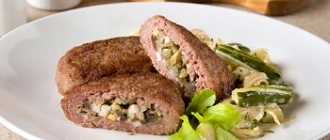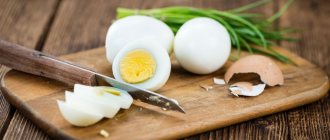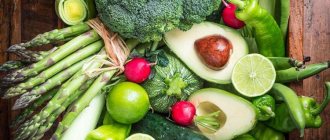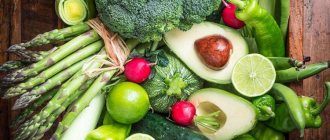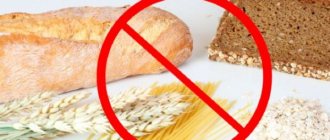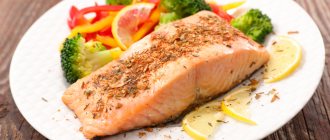Along with the global desire of the female half of humanity to lose weight, more and more teenagers are joining this “slimness relay race,” often not realizing that at their age this can not only cause irreparable harm to health, but can also simply be dangerous.
“Why don’t I lose weight?” - Oddly enough, many teenage girls and boys from 12-13 to 15-16 years old think so, completely forgetting that their body is still growing and will only be fully formed by the age of 20-21. And before this age, all self-experiments, including dietary ones, will bring nothing but health problems.
Of course, it is difficult to convince a teenage child of anything, especially when it comes to appearance, so all parents’ arguments about the dangers of diets will be safely ignored. Now it would be wiser not to categorically hinder your daughter or son by forcing them to eat, but to help them organize their meals properly.
An important point: now children, as a rule, look for information on the Internet. The task of parents is to get ahead of them and find really useful information that they can unobtrusively offer to read to a child obsessed with the idea of losing weight.
What teenagers 12 and older need to know about diet:
- In adolescence, metabolism in a growing body occurs completely differently than in adults, so you should worry about weight unless there are medical indications after examination. If your pediatrician doesn't diagnose you as obese to any degree, don't starve yourself!
- While the body is growing, it is very important that it receives all the necessary vitamins and minerals. When starting any diet, you deprive yourself of certain beneficial substances or limit their quantity, which after 8-10 years can lead to problems not only with weight, but also with health. By the time the body fully matures and growth stops (20–21 years), the weight will most likely return to normal, which corresponds to the growth index.
- Using strict diets for girls and boys at this age can be fraught with consequences in the future - from skin problems to hormonal imbalances and stomach diseases (for example, gastritis, in which you will have to deny yourself a lot and go on a therapeutic diet). The best option for losing weight would be to change your diet to a healthy diet and moderate physical activity (swimming, dancing, fitness, yoga, regular daily walks), which will prevent you from gaining excess weight and will allow you to lose the kilos you have already gained.
If a teenager is seriously concerned about their weight, the best thing they can do is eat. If possible, correctly and regularly.
Important microelements needed by the teenage body
The body needs to receive a full range of vitamins.
Calcium
One of the important components is calcium. It helps strengthen bones, teeth and hair. By getting enough calcium from an early age, you can protect yourself from bone problems in the future, as the body will accumulate calcium and strengthen itself with it. Calcium affects muscle contraction and relaxation, participates in the process of blood clotting, plays the role of anti-stress and performs many other useful functions. Milk, dairy products, hard cheeses, cabbage, beans, various nuts, seeds, rice, lentils, broccoli contain calcium.
Squirrels
It is also important to control the amount of protein. This component is known to everyone for its importance for muscle growth and strengthening. Sufficient amounts of protein are needed not only by athletes who are building muscle mass, but also by teenagers to provide enough energy to build muscles and tissues of internal organs. Proper nutrition for a 15-year-old teenager must contain high-protein foods that will help him get stronger and maintain a high level of energy. A diet rich in protein helps you lose excess fat while strengthening your muscles.
You can get protein from lean meat, poultry, fish, beans, nuts, eggs, and tofu. This can also include seafood (lobsters, squid, mussels, shrimp, crabs); milk with any percentage of fat content, half-fat cottage cheese, kefir, yoghurts.
Fats
Fat is an integral nutritional component that helps adolescents’ bodies grow, develop harmoniously and actively. It is responsible for the health of hair, skin, nails and gives energy. A teenager should consume 25 to 35% fat of total calories each day.
Unsaturated fats will always be useful as long as their amount in the body does not exceed the norm (after all, they carry too many calories). The best sources of fat for the body:
- olive, rapeseed, sunflower, corn and soybean oil;
- fish such as salmon, trout, tuna, whitefish;
- nuts: walnuts, almonds, peanuts, cashews or others.
Saturated fats, unlike unsaturated fats, do dirty work in the body and are of little use. They can have a detrimental effect on arteries, clogging them, and increase the risk of cardiovascular diseases, and we have already mentioned what this leads to. Saturated fat is found mainly in animal products and some vegetable oils:
- butter;
- whole milk;
- cheese;
- fat meat;
- coconut and palm oil.
Trans fats are the most dangerous group for the body and do not provide any benefit. They are found in:
- baked goods such as cookies, buns, muffins, donuts;
- dry snacks, such as crackers, chips;
- margarine;
- fried food.
Iron
Proper nutrition for a 16-year-old teenager must contain iron. For boys, iron is very important, because their rapid growth and increase in muscle mass require external support. And for girls, iron is important not only to maintain growth, but also to compensate for blood loss during menstruation. To get iron, eat the following foods:
- Fish and seafood;
- lean beef;
- cooked legumes: peas, beans, beans;
- buckwheat;
- white cabbage;
- potatoes boiled in their jackets;
- spinach.
What foods are best to exclude from a teenager's diet?
To prevent your doctor from making a disappointing diagnosis, exclude foods that are not only unhealthy, but also help you gain weight very quickly:
- First of all, these are cheeseburgers, hamburgers, French fries and other similar delicacies from fast food restaurants, beloved by all children and teenagers. Not only are all these dishes very high in calories, they also contribute to the accumulation of “bad” cholesterol in the body, which reduces the elasticity of blood vessels.
- Chips. This is the second most “dangerous” specimen among products. Very tasty and light, they quickly satisfy hunger, but they are also quickly addictive and contribute to a favorable gain of kilograms, due to their high calorie content.
- Butter buns, in addition to a couple of pleasant tasty minutes, will also add weight. This does not mean that you don’t need to eat bread at all, but it’s better to limit baking, and lightly dry the bread or eat it as toast, and also choose the least high-calorie bread, for example, rye.
- Sweet. How can you refuse sweets if they are so delicious?! It is very difficult for a teenager to overcome his desires for food, so no one calls for not eating sweets at all. A daily portion within reasonable limits will not affect your weight, especially if you move a lot.
- Sweet carbonated drinks - it’s clear that teenagers love to indulge in such drinks, but you should try to reduce their quantity and accustom your child to regular water or freshly squeezed juices.
- Juices from boxes - these also need to be looked at carefully, as many of them contain a large amount of sugar. Therefore, carefully choose juices that contain it in small quantities, or better yet, without it at all.
In the video, Laysan Utyasheva shared her secrets on how to eat less sweets:
Exception
Products that become the main cause of obesity in adolescents, i.e. they should be completely excluded from consumption:
- Chips, soda, chocolate bars and candies.
- Industrially produced sauces (ketchups, mayonnaise, adjika, etc.).
- Processed meat products (sausage, ham, frankfurters).
- Bakery products and fast food.
- Fried food (especially cutlets and potatoes, fried pies).
You should eat mostly home-cooked food. Vegetable soups, cereal porridges (you shouldn’t get carried away with semolina and oatmeal), bread, seafood, dairy products (whole milk and kefir, cheese and cottage cheese), eggs, weak tea, it is important to stew and bake chicken, lean pork, beef. Potatoes can be consumed no more than twice a week, boiled or baked. Pasta can only be eaten from durum wheat. Do not overuse sweet and starchy foods.
In a teenage diet, you can arrange fasting days, on which you can eat kefir, buckwheat with water and fresh/baked fruits. But it is recommended to arrange such days a maximum of one day a week. Calorie content – up to 1000 per day. A more significant decrease in nutritional value and, especially, complete hunger on fasting days will cause various disorders in the teenager’s body, including overstimulation of the appetite center in the brain, which can lead to a breakdown: the child will eat everything around and eventually gain more than he lost before. .
Physical activity plays a significant role; doing something for two hours two to three times a week will be enough. Any sport is suitable, as long as it brings pleasure to the teenager (running or swimming, yoga or dancing, rollerblading or skating, skiing, wrestling and boxing, team sports, football, volleyball - the list goes on and on).
Diet rules for losing weight for teenagers
I would like to repeat once again that a weight loss diet for girls and boys aged 12 to 15 years is prescribed only by a doctor! Showing independence in this matter threatens irreversible consequences. A few basic rules will help you adjust your diet and allow you to stay in great shape:
- In order for a girl or boy to start losing weight, it is worth cutting down the diet somewhat - reducing calorie content by 20% . On average, a girl should consume 2500 kcal per day, a boy 2700. This number can be reduced by 20% (no more).
- In daily nutrition, preference should be given to healthy carbohydrates (cereals, vegetables, fruits) - about 50% of food, proteins and fats about 25%.
- An important point is the regularity and frequency of nutrition. It is worth switching to a 4-meal diet , preferably at the same time, meals should not be skipped.
- Breakfast is an important meal; it should consist of carbohydrate and protein foods (porridge [especially oatmeal and buckwheat are good for weight loss], omelettes, fruits or vegetables). Breakfast should be complete, and not a quick one, as it gives you energy for the first half of the day. Despite the fact that everything eaten for breakfast is burned during the day and is not deposited in the body!
- Lunch is an important meal and should definitely include hot food, especially soup! Hot first courses are necessary for those who decide to lose weight. In addition, if you include soups in your menu every day, there will be no problems with digestion, and, consequently, with weight.
- Afternoon snack and dinner - these meals should be light in calories. The menu should include vegetables, fruits, dairy products; You can add a little meat or fish to vegetables, but not more than 200 grams.
- Reduce the amount of fatty and fried foods . It is best to bake dishes in the oven, boil or steam them.
- Physical activity not only strengthens and shapes muscles, as many children think, but also helps burn fat reserves. At the same time, the most effective activities for girls will be swimming and dancing. Although, almost any sport, if practiced constantly, will lead to a similar result. It is very important that the classes are “for fun”, and not for show.
By adhering to these simple rules, you can lose weight without any problems, and the weight loss will be gradual and natural, without any serious consequences for health.
More useful information can be seen in the video:
Attention! In any case, you need to visit a therapist!
Only a specialist will allow you to choose the right diet!
How to lose weight for a 14 year old teenager - an effective way to lose 4-6 kg in a week
There are many effective and efficient diets for teenagers 14 years old, which can easily lose up to 6 kg in just a week. The main condition is to strictly follow the recommendations of nutritionists; mistakes can lead to a lack of results, deterioration of health, and exhaustion of the body.
How to lose weight at 14 years old with a balanced diet? There should be at least five meals (regardless of the chosen diet):
- Breakfast. Any porridge (except rice) cooked in water is allowed to add fruits and dry fruits. Unsweetened tea with a slice of bread or biscuits.
- Snack. Homemade yogurt or kefir (fermented milk drinks should have the lowest percentage of fat content).
- Dinner. Sliced vegetables with boiled meat, low-fat soup (mushroom, vegetable).
- Snack. Limit yourself to one apple or banana.
- Dinner. Fresh vegetables (use a small amount of olive oil for dressing), grated cottage cheese with berries and fruits.
It is not recommended to snack between meals; the effectiveness of the diet will be significantly reduced.
What additional measures should be taken to speed up the burning of extra pounds and how to lose weight for a 14-year-old teenager? The easiest way to improve the effectiveness of proper nutrition is regular exercise. The greatest benefits in body correction will come from:
- Squats (great for tightening problem areas in the buttocks, thighs, and abdomen). It is recommended to do at least five sets of 20–25 squats per day. Maintain good posture - your back should be straight.
- Twisting. They improve the abs, get rid of a loose, flabby tummy, and remove fat deposits from the sides.
- Jumping rope. They act in several directions at once - they tighten the stomach, buttocks, and remove fat deposits on the hips.
Diets for teenagers should also be supplemented with walking. It is not necessary to travel long distances; it is enough to avoid traveling to school by bus or going up and down the elevator. If time allows, supplement your daily routine with walks before bed. Half an hour is enough to burn a lot of calories. Fresh air also promotes sound healthy sleep and proper rest for the body.
Fully or partially limited products
- sweets;
- seasonings, spicy dishes that increase appetite;
- semi-finished products, chips, hamburgers;
- fried, fatty foods;
- smoked meats and sausages;
- bakery products;
- sweet carbonated water (Pepsi, Cola, Sprite), coffee, cocoa, chocolate;
- mayonnaise and other fatty sauces;
- reduce salt and sugar intake.
Table of prohibited products
| Proteins, g | Fats, g | Carbohydrates, g | Calories, kcal | |
Vegetables and greens | ||||
| radish | 1,2 | 0,1 | 3,4 | 19 |
| white radish | 1,4 | 0,0 | 4,1 | 21 |
| red radish | 1,2 | 0,1 | 3,4 | 20 |
| black radish | 1,9 | 0,2 | 6,7 | 35 |
| spinach | 2,9 | 0,3 | 2,0 | 22 |
| sorrel | 1,5 | 0,3 | 2,9 | 19 |
Fruits | ||||
| bananas | 1,5 | 0,2 | 21,8 | 95 |
Berries | ||||
| grape | 0,6 | 0,2 | 16,8 | 65 |
Mushrooms | ||||
| mushrooms | 3,5 | 2,0 | 2,5 | 30 |
Nuts and dried fruits | ||||
| raisin | 2,9 | 0,6 | 66,0 | 264 |
Cereals and porridges | ||||
| semolina | 10,3 | 1,0 | 73,3 | 328 |
| white rice | 6,7 | 0,7 | 78,9 | 344 |
Flour and pasta | ||||
| pasta | 10,4 | 1,1 | 69,7 | 337 |
Confectionery | ||||
| jam | 0,3 | 0,2 | 63,0 | 263 |
| jam | 0,3 | 0,1 | 56,0 | 238 |
| candies | 4,3 | 19,8 | 67,5 | 453 |
| pastry cream | 0,2 | 26,0 | 16,5 | 300 |
| cookie | 7,5 | 11,8 | 74,9 | 417 |
Ice cream | ||||
| ice cream | 3,7 | 6,9 | 22,1 | 189 |
Cakes | ||||
| cake | 4,4 | 23,4 | 45,2 | 407 |
Chocolate | ||||
| chocolate | 5,4 | 35,3 | 56,5 | 544 |
Raw materials and seasonings | ||||
| mustard | 5,7 | 6,4 | 22,0 | 162 |
| mayonnaise | 2,4 | 67,0 | 3,9 | 627 |
Dairy | ||||
| milk 3.6% | 2,8 | 3,6 | 4,7 | 62 |
| milk 4.5% | 3,1 | 4,5 | 4,7 | 72 |
| cream | 2,8 | 20,0 | 3,7 | 205 |
| sour cream 25% (classic) | 2,6 | 25,0 | 2,5 | 248 |
Cheeses and cottage cheese | ||||
| cheese | 24,1 | 29,5 | 0,3 | 363 |
| cottage cheese 11% | 16,0 | 11,0 | 1,0 | 170 |
| cottage cheese 18% (fat) | 14,0 | 18,0 | 2,8 | 232 |
Meat products | ||||
| pork | 16,0 | 21,6 | 0,0 | 259 |
| pork liver | 18,8 | 3,6 | 0,0 | 108 |
| pork kidneys | 13,0 | 3,1 | 0,0 | 80 |
| pork fat | 1,4 | 92,8 | 0,0 | 841 |
| salo | 2,4 | 89,0 | 0,0 | 797 |
| beef liver | 17,4 | 3,1 | 0,0 | 98 |
| beef kidneys | 12,5 | 1,8 | 0,0 | 66 |
| beef brains | 9,5 | 9,5 | 0,0 | 124 |
Sausages | ||||
| smoked sausage | 16,2 | 44,6 | 0,0 | 466 |
| smoked sausage | 9,9 | 63,2 | 0,3 | 608 |
| sausages | 10,1 | 31,6 | 1,9 | 332 |
| sausages | 12,3 | 25,3 | 0,0 | 277 |
Bird | ||||
| smoked chicken | 27,5 | 8,2 | 0,0 | 184 |
| duck | 16,5 | 61,2 | 0,0 | 346 |
| smoked duck | 19,0 | 28,4 | 0,0 | 337 |
| goose | 16,1 | 33,3 | 0,0 | 364 |
Fish and seafood | ||||
| smoked fish | 26,8 | 9,9 | 0,0 | 196 |
| salted fish | 19,2 | 2,0 | 0,0 | 190 |
| Red caviar | 32,0 | 15,0 | 0,0 | 263 |
| black caviar | 28,0 | 9,7 | 0,0 | 203 |
| canned fish | 17,5 | 2,0 | 0,0 | 88 |
| cod (liver in oil) | 4,2 | 65,7 | 1,2 | 613 |
Oils and fats | ||||
| animal fat | 0,0 | 99,7 | 0,0 | 897 |
| cooking fat | 0,0 | 99,7 | 0,0 | 897 |
Non-alcoholic drinks | ||||
| instant coffee dry | 15,0 | 3,5 | 0,0 | 94 |
| black tea | 20,0 | 5,1 | 6,9 | 152 |
| * data is per 100 g of product | ||||
Advantages and disadvantages
| pros | Minuses |
|
|
The oldest myth about healthy eating
Soup is not a necessary dish in a healthy diet for a teenager! This phrase may surprise many. After all, we all remember how mom worried every day whether we had eaten soup today. Yes, this is a really good dish. Boiled meat, vegetables, liquid. However, you can just as easily eat a salad and wash it down with a glass of cold water. Moreover, soups are also different. There is nothing healthy at all in those rich, fatty soups that our grandmothers love to cook. Therefore, if your child likes soup and eats it with pleasure, it’s good for him, but if not, you shouldn’t force him.
Cooking food for school
Nutrition for schoolchildren during school hours is no less important than at home. What can you prepare for your child if the establishment does not have a canteen or you do not trust the local catering?
First, ask your child what he would like to see in his lunch box for lunch. Perhaps it will be breakfast cereals made from dried fruits and nuts, or perhaps he will want a casserole. There is no need to put a teenager’s least favorite dish in a box, because there is a high probability that he will not want to eat it.
Based on the opinion of nutritionists, the correct lunch (or afternoon snack) for a schoolchild may consist of:
- pieces of fresh fruit, nuts, dried fruits - this is a dry bulk breakfast;
- yogurt, curds, cheese mass;
- healthy sandwiches based on cereal bread, butter, fresh vegetables, and sliced meats;
- nutritious rolls made from pita bread, fresh herbs and meat;
- eggs, slices of cheese, vegetables;
- cottage cheese or berry casseroles;
- Japanese snack.
The latter nutrition option is optimal for a growing body, since a bento lunch or dry snack contains various dishes that are rich in protein, vitamins and minerals. As you can see, preparing lunches for school does not take much time. You just need to find your recipe and follow your child’s wishes.
It is very important to package food for your schoolchild beautifully so that he wants to eat it. Lunch boxes will help you with this. The color palette of the products is very bright, and the child can decorate it himself with stickers or drawings.
Diet menu
The proposed diet is suitable for boys and girls. The list shows an approximate serving size, but you can adjust it to your individual caloric needs. Menu for a teenager for 1 week of diet:
- Mon: breakfast: omelet of 2 eggs and 100 ml of milk, 20 grams of whole grain bread, 10 grams of hard cheese, green tea;
- lunch: 350 grams of beef borscht, 20 grams of central bread, 100 grams of fresh vegetable salad;
- afternoon snack: 200 grams of cottage cheese and apple soufflé, 250 ml of freshly squeezed fruit juice;
- dinner: 150 grams of baked fish, 100 grams of vegetable stew.
- Z: 200 g buckwheat with 5 g butter, 150 g fresh vegetable salad;
- W: 200 g mashed potatoes, 1 chicken cutlet, 20 g central bread, 1 medium tomato;
- W: 200 g of oatmeal in water, 1 soft-boiled chicken egg, 20 g of hard cheese;
- W: 250 g durum wheat spaghetti with shrimp and vegetables, green tea;
- W: 250 g rice pilaf with apple and raisins, 250 ml cocoa;
- Z: 2 toasts with avocado and cheese, 250 ml of coffee drink;
Diet recipes
Losing weight for teenagers is not so difficult if parents help create and implement a varied menu. A delicious dessert will brighten up your diet. Recipe for cottage cheese and apple soufflé:
Ingredients:
- wet cottage cheese – 200 grams;
- sweet apple – 1 pc.;
- medium-sized chicken egg - 2 pcs.;
- honey – 1 tsp;
- vanilla - on the tip of a knife;
- raisins - optional, by eye.
Cooking method:
- Grind the cottage cheese with a blender or grind through a sieve until creamy.
- Grate the apple onto a fine grater and squeeze out the juice lightly.
- Separate the egg white from the yolk.
- Mix cottage cheese, apple, yolk, honey and vanilla.
- Beat the egg white with a pinch of salt until a thick, fluffy foam forms.
- Mix the egg whites into the curd-apple mixture in small portions. Do this carefully so that the foam does not settle.
- Divide mixture among muffin tins.
- Bake in the oven for 20-25 minutes at 180°C or 5 minutes in the microwave at maximum power.
- Sprinkle with cinnamon before serving.
Boys and girls love fast food. One of the popular dishes is nuggets. Breaded chicken is very high in calories, but if the dish is prepared correctly, it can be eaten even on a diet for teenagers. Recipe for PP nuggets:
Ingredients:
- chicken fillet – 700 grams;
- hard cheese up to 40% fat – 20 grams;
- natural yogurt – 60 grams;
- oat bran – 40 grams;
- salt, spices - to taste.
Cooking method:
- Cut the chicken fillet into 3x2 cm pieces.
- Add yogurt, salt, spices to the bird, mix and refrigerate for half an hour.
- Place bran on a flat plate, add salt and seasonings.
- Roll each piece of fillet in bran and place on a baking sheet lined with baking paper. Sprinkle cheese on top of nuggets.
- Bake in the oven for 20-25 minutes at 180-200 °C.
Reviews and results
Often teenagers make their own decision to lose weight in order to be different from their peers or to be like the stars. For this reason, they sometimes resort to extreme measures. Parents bear full responsibility for the proper nutrition and health of the child. Sometimes it takes a long time to convince them and visit nutritionists and psychologists together. It is good if parents take care of the child and his problems, support him and guide him. An analysis of reviews showed that children at this age lose weight quite easily if they limit the consumption of unhealthy foods and increase physical activity.
- “... In the summer, my grandmother in the village manages to lose 7 kg. This happens unnoticed, I probably walk a lot, walk, swim. I eat a lot of fruits and dairy. With the beginning of the school year, when you have to sit and study a lot, and even more so with the onset of winter, almost all the lost weight is restored. And in winter you want to eat more than in summer. It makes me crave cookies, chocolates and Snickers. In the spring, I start watching my diet: I remove all sweets, drink tea with dried apricots or prunes, take apples and tangerines, juices and cottage cheese to school - after all, it’s healthier than a cake or a sweet bun. By summer I manage to lose 3 kg, and I “catch up” with the rest in the summer.”
- “...Girls, you need to take care of yourself all the time. There is a golden rule - eat less sweets, fries, burgers, flour and move more. That's why I started going to fitness classes at school. Classes in the evenings, 3 times a week, paid. We work out with a great trainer who tells us everything about nutrition and training. I got so carried away and got involved. I noticed that when I started eating right, I crave sweets less. There is no need to be shy about taking apples, dried fruits, nuts, and even cottage cheese and yogurt with you. This is all much healthier than a pie from the buffet. Within a month, my stomach noticeably tightened, my hips shrank, but I lost only 2 kg. I think everything will be great by summer.”
Baked fish with vegetables
Unfortunately, it is often quite difficult to get teenagers to eat fish. However, it is a truly necessary product in the diet, being the main source of phosphorus. Below is a recipe for a delicious fish dish for a teenager.
What we need for cooking:
- sea fish (ideally mackerel or pink salmon);
- hard cheese – 100 g (salted farm cheeses are considered the healthiest, as they do not contain vegetable fats);
- carrots – 1 pc.;
- onion – 1 pc.;
- lemon - several slices.
Cooking steps:
- Clean the fish thoroughly and cut off the head. Rub the cleaned carcass with salt.
- Chop the onion, grate the carrots and cheese, mix and add salt to taste.
- Cut the fish lengthwise from one edge, but not completely, but so that the second edge remains unaffected. Stuff the fish with vegetables and cheese. Also place lemon slices inside; they will soak the filling and fish so that it does not dry out in the oven.
- Wrap the dish in foil and place in an oven preheated to 220 degrees for 40 minutes.
